Whether you are a professional crafter or a hobbyist, your craft room or space can greatly affect your overall experience, especially in terms of efficiency and enjoyment. Good craft space planning considers the design, layout, and organization of an area to make it easier to find the tools and supplies that you need, while giving you space to craft.
For some people, the ideal space is a functional, well-lit, dedicated room where every tool and scrap of material is categorized and easy to find. Others, thanks to space or budget constraints, may make do with a transformed closet or nook or even a crafting table. But no matter how much space you have available, here are a few tips from a dedicated crafter with 28 years experience that I hope will make your crafting experience rewarding and enjoyable. I’ve put this guide together with my expert friend and fellow artist, Laura Davis. Laura has been licensed architect and interior space planner for 23 years. I think you’ll find her craft room ideas and insights really valuable.
What Kind of Crafter Are You?
Most crafters fall into one of three crafting personalities, the hobbyist, the dedicated hobbyist or the professional/craft business owner. The kind of crafter you are has a lot to do with your crafting space and requirements and craft room ideas that work for one won’t necessarily work for another.
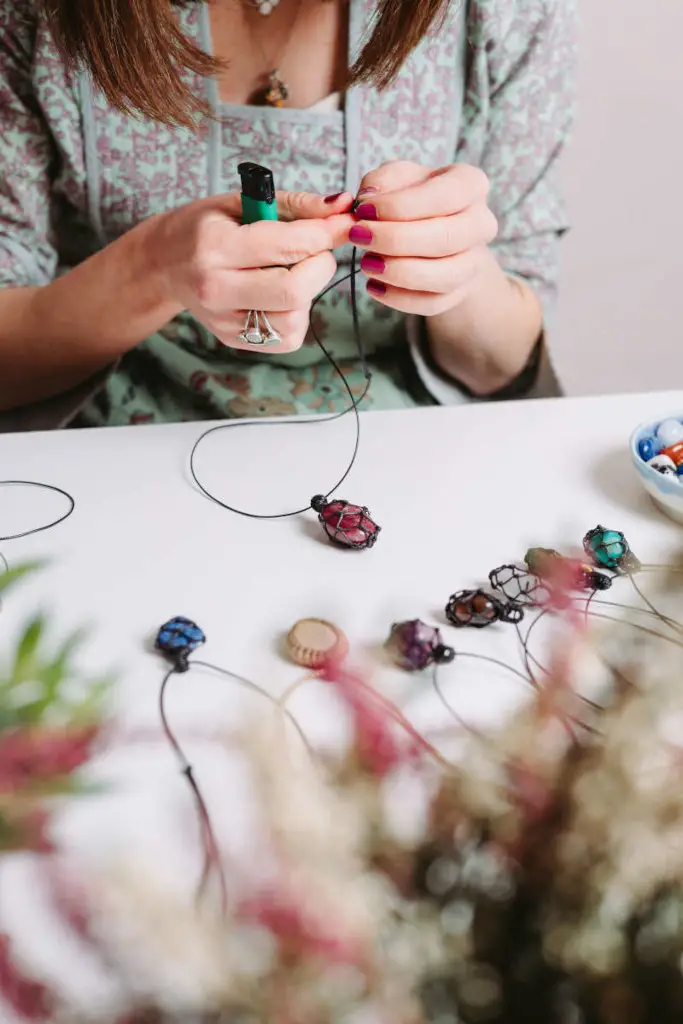
Hobbyist Crafter
“Crafting keeps me sane. It’s a hobby that I’d love to do more often, but my current stage in life is too chaotic to allow that. Also, my house is too limited to dedicate an entire room to crafting. Instead, when I find the time, I work in the guestroom or in a corner of my kitchen.”
The hobbyist crafter is someone that crafts occasionally for fun. Every crafter starts here. Some may slowly evolve into a full-time professional crafter however, most stay firmly within the hobbyist camp, which is totally fine.
Hobbyists crafters are in it purely for fun on a part-time basis, and usually have the fewest needs when it comes to crafting space. They may make some money selling off a few finished items each year, but the joy is in working on the DIY and craft projects they create. They are likely making crafts to solve a decor situation, or as a gift to someone (or themselves).
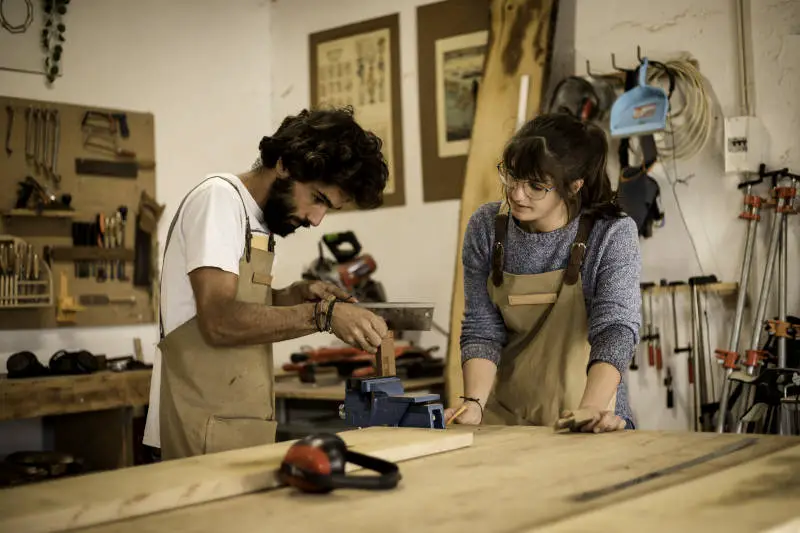
Professionals Crafters/Business Owners
“Crafting is a lifelong passion that’s become my livelihood. My creations are my income. What I need now, is a more organized crafting workspace. I need it to be more efficient and comfortable. The ‘flow’ will not just affect the enjoyment but also how successful I can be in this business venture.”
Professional crafters often own their own business and have reached a level of proficiency that lets them create things that sell consistently. They know how to create on a high level, but also dedicated their time and energy to creating a business or brand.
You can tell which crafters have reached the professional level because they are ready to take on more challenging projects and have a sense for how to make them profitable. They often need advanced, dedicated equipment like a Glowforge or kiln, and are willing to invest in their crafting tools. This group has a good eye for the right materials, and are fully committed to making their craft work every day.
Challenge #1: Space to Craft
“I have enough space!”, said no crafter ever!
Much like the current housing market, when it comes to crafting, real estate is always at a premium. Some lucky people can dedicate an outdoor shed, their garage, or portion of their basement to their craft storage and workspace, while others can barely isolate the corner of a room.
Space requirements are defined by your chosen craft and the equipment that you need to do it. Your skill set also determines how much space you need, since more experienced crafters likely require more space. However, every crafter has problems with creating the ideal craft room for themselves. Fortunately, there are effective ways to deal with the problem depending on what type of crafter you are.
Space Solutions for Hobbyists
Regardless of the advantages or disadvantages relative to your available space, most space challenges can be solved with the same creative approach you use on your crafts. Let’s begin with the worst-case and most common scenario—severely limited space options. Often this problem can be eased by either sharing an area currently being used for another purpose or by repurposing a space you’ve not considered, such as a guest or laundry room.
For example, depending on the size and scope of your typical project, a closet can be converted into a small workspace. The key is to utilize the walls.
Pegboards and shelving are useful for elevating your storage, and the floor can accommodate a small crafting cabinet, a standing desk, or even a packing station. Essentially, a decent-sized closet can become a work cubicle. In fact, a closet that offers at least a few feet of depth can be repurposed in such a way that a chair can be secured under a standing desk and the doors can be closed with your entire workstation inside of it, making your work and storage invisible to visitors.
Craft closets are a great solution for minimalist crafters working with small supplies, such as paper art, jewelry, magnets, popsicle stick caricatures, Christmas ornaments, etc. Crafters of any type can work in small spaces if their craft doesn’t require a lot of supplies or tools.
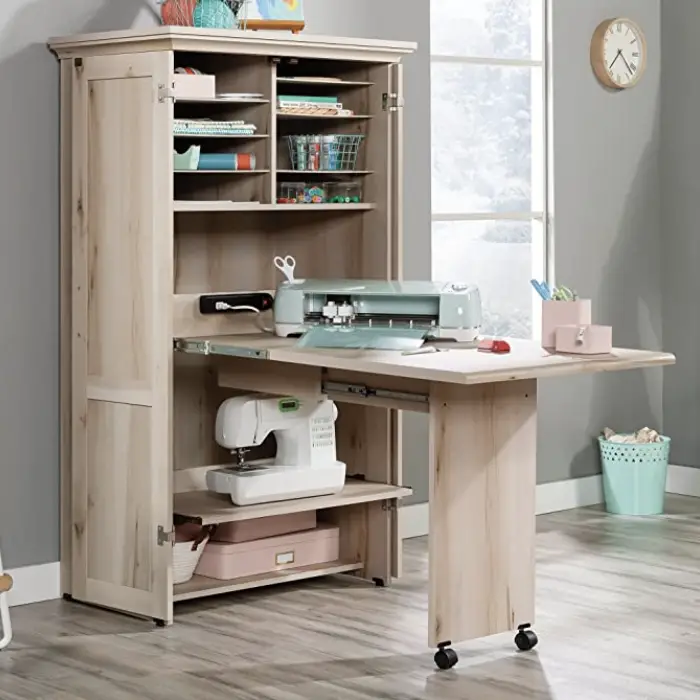
For example, jewelrysmiths can work on a small desk in a closet. Crocheters can work with just a place to sit and possibly a bag to hold their yarn. It all depends on the craft that you do and what you need to do it. Dedicated and professional crafters often need more than this because they have more complex needs.
Space Challenges for Dedicated Crafters
For those whose crafting or DIY projects require larger pieces of fabric, items that need to be spread out, or large equipment like sewing machines, table saws, or 3-D printers, a closet will not do. In this case, you likely have “some” space you already use to store or use these items or you may be making use of a guest room or mud room.
Sharing Space with Dual-Purpose Rooms
In a shared space, you likely have limited storage and your supplies may be disorganized and cluttered, creating a chaotic appearance you’d like to avoid. And, if you’ve got children or pets in the house, you might be concerned about leaving items out in the open.
The key to successfully sharing space in a dual-purpose room is to be able to store everything away securely and return the room to its original purpose and functionality when you are not crafting. Guestrooms, home offices, mudrooms, and playrooms are the most popular spaces for crafters in this situation.
If you plan to have a dual-purpose craft room, be sure to factor in how much stuff you need to store and whether your work can be picked up and moved around or if it typically stays out for weeks at a time. Also, make note of the equipment you need within your immediate reach.
Crafting is more enjoyable and efficient when you don’t have to move a project you’ve already started. Plus, it’s never pleasant having to get up from the middle of a project to search for bits and pieces in the storage closet. Take inventory of what must be within arm’s length of where you spend the most time in your dual-purpose room and factor that into the room design.
Some crafting hobbyists will need an entire closet for their materials, while for others, little drawers are enough. And the same is true of your craft room worktop. Determining the ideal number of feet in terms of length and depth you need the table or the countertop to be also affects the room’s and set up.
Moreover, if the current guestroom is used for crafting 70% of the time, hideaway couches, air mattresses, and Murphy beds offer several ways to quickly convert your craft area into a temporary bedroom.
Another overlooked aspect of creating a functional crafting station whether in a shared space or not, is the flooring. Carpet can stain, and isn’t conducive to anything on rollers. Hardwood flooring can be dented and grooved by equipment and other supplies. It is also tough on your feet and knees. Vinyl flooring is always an option, but the best of both worlds might be a washable, low-pile rug that is easier on the your joints, unobstructive to rolling objects, and can be thrown into the washing machine when your epoxy, sawdust, or paint drops onto it.
Space Challenges for Professional Crafters
Professional crafters have the most space requirements most of the time. This is due to needing to have business management-related resources nearby on top of their other crafting supplies.
For example, business owners may need a computer, mailing supplies, and other office-related supplies. This requires more space since those materials need to be stored somewhere. Because of this, many professional crafters look into expanding their homes or remodeling a space within the home specifically for running their business.
This can be a costly process, but it does not have to be. It could be as simple as taking everything out of a room except for a table and a chair. In other cases, it could mean a detailed remodel with contractors, or building a separate structure in the backyard. Professionals are more likely to take this route because their business can help pay the costs of setting up a dedicated business space.
For those looking to build, remodel, or expand an area of their home to accommodate their crafting hobby, there are a few questions you should ask first:
- How much space do you need?
- How big does your craft room furniture need to be to accommodate your tools and material?
- What kinds of storage solutions do you need?
- What is your craft room budget?
- Will it hurt or help the value of your home?
- Do you need specialized facilities to do what you do?
Make sure that this is the right choice before taking a leap into creating a dedicated craft room If you are not committed to continuing your craft for the long-term, then this may not be a good choice for you. However, anyone that knows their craft will become or already is a business, creating a dedicated space can be a great way to support your business.
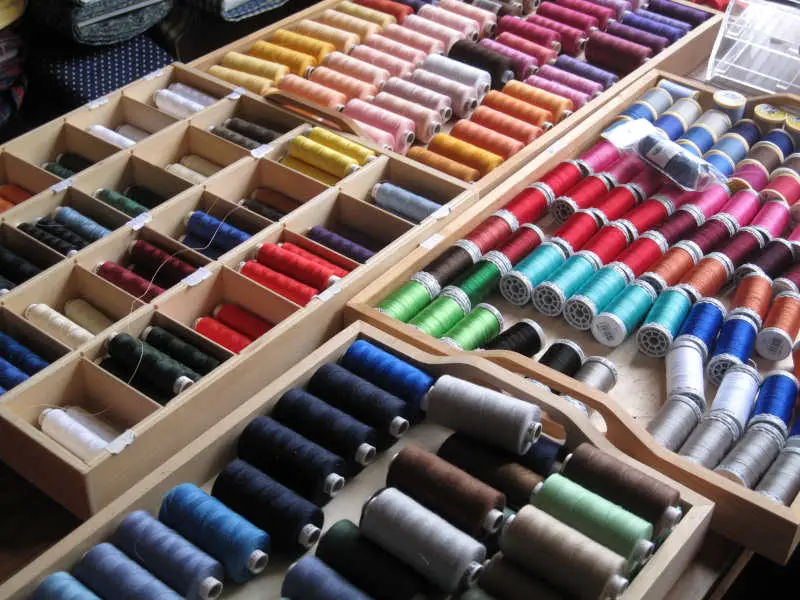
Challenge #2: Craft Storage
Your storage needs depend on your available work area and whether you plan to put your craft tools and materials away when you aren’t using them. If you have small children, you don’t want to leave out a hot glue gun or small pieces that could be choking hazards. If your crafts need hours to set or dry, curious little fingers could do irreparable damage before you finish them.
Experienced and novice crafters alike have a solid grasp on how much storage they need depending on the type of crafts they enjoy and how often they find themselves purchasing more materials, tools, or devices. Where they might benefit from the advice of an interior designer is in finding new ways to maximize the storage space (or furniture) that they have.
Focus on Functionality and Efficiency
When it comes to storage, much like a chef’s kitchen, it’s wise to think in terms of functionality and efficiency. The best way to do this is to think about stations. A professional chef doesn’t keep the plates and flatware in the same cabinet as the spices and cooking oils. They group items by station or purpose.
Choose Storage Options Based on your Process
Ideally, the way you store craft supplies and tools relates to your crafting process. Think about your common or favorite craft activities and what you need or use to do them. Then, apply those preferences or steps to your storage decisions.
Would it be better to see the items in glass jars or transparent drawers? Would it help to color-coordinate containers or bins? Which items should be immediately at hand, and which ones are rarely accessed or necessary?
Aesthetics Are Also Important
Don’t neglect the way that your workspace looks. The aesthetics of its design can play an important role in how much you enjoy working on your craft. Even subtle design changes to the color scheme can be enough to give your space a look that keeps you motivated and inspired.
It doesn’t take special decorations or appointments to make your workspace an artists’ haven. Just focus on how you arrange the things that are already there.
Stack your items on bookshelves with a purpose. Make use of your craft room walls. Group your materials by task, style, or type. Get all spools of thread in one place, all of your paper in one place, and all of your paint in another—then regularly take inventory to ensure you are using spare parts from previous projects and that your space or room organization works well for you.
There are a number of Facebook groups that can provide inspiration. Check out this one or this one.
Let Nothing Be Wasted
The biggest solution in storage-related problems is reducing and repurposing leftovers. If you will never use the rest of a package of scrapbook paper, or a few yards of fabric, donate them. Or if you have a crafting resale store near you like Recreative Denver, you could even make a few dollars on your unused stash. It’s a win-win because someone else can enjoy it and you won’t have to waste precious storage space with it.
Challenge #3: Power and Craft Lighting
Well-lit work areas are essential whenever you’re working with small or highly detailed items or concentrating on hues and color. In fact, lighting can make or break a craft rooms and spaces.
Luckily, there are many options when it comes to craft lighting —whether you need to brighten an entire room or just a small area. Some craft cabinets come with power strips, so the entire structure can be plugged into an outlet. These often include (or you can add) smaller “task” or desk lights to further illuminate the area where you’re working.
Craft Lighting and Power Challenges for Hobbyists
While hobbyists have the easiest time finding space for their craft, making sure that they have adequate light and power resources is a bigger problem. For example, using a closet as the workspace means there may not be a power outlet easily accessible. Closets tend to not have great lighting either. Fortunately, there may be battery-powered options to help with this.
Lighting and Power Challenges for Dedicated Crafters
If you’re working in a shared space, spotlights that can be aimed directly onto your countertop either from a track running along the ceiling or via a standing lamp are handy. It’s even possible to use a head lamp, to illuminate a dark space where you need it, allowing someone else to continue sleeping in the room without disturbing them. (Personally, I use one to read at night or whenever I go into the attic. They’re super helpful!)
Depending on where your outlets are, you could face challenges getting power to the areas of the room where you work. Gargantuan power strips and ungainly extension cords aside, if you’ve got access to electricity from the backside of a wall, it should be easy to just tap into and “flip” that outlet into your workspace or add an outlet onto that circuit. An electrician can perform this work very quickly and simply.
If, however, you’re working on projects that require a substantial amount of power, such as a heat press or power tools, you might need to have another circuit installed that is dedicated to its own electrical supply.
Lighting and Power Challenges for Professional Crafters
While professional crafters have a lot of requirements for lighting and power, they also have the most resources to dedicate toward fixing those problems. Whether you are having a space built or refurbished for you to work in, it is possible to customize it as much as you are willing to invest in the space.
Just make sure that you have a good idea of what you need before you start the project. That way, you know what modifications you need to make. Otherwise, you may miss something and need to have more work done to make your space usable.
Challenge #4: Comfort and Ergonomics
Comfort and ergonomics are an important part of your crafting space. More than just enjoyment, ergonomics is important for maintaining your health. There are also safety concerns that you must focus on to make sure that your space can be used properly. For example, considering electricity and power needs, depending on your crafting preferences, a room can get quite hot, humid, or unpleasant while you work. The odors of glues and paints and the heat from some tools emit can make your space smelly and uncomfortable. You must take these things into consideration when planning your space so that you know what you need to fix as you set the space up.
Ventilation is Important at Any Level
Good ventilation can make your workspace more comfortable and prevent smells and heat from permeating the rest of your house. If you own your home, you might consider installing a window, a vent hood, or a bathroom fan that’s designed to remove air from the inside toward the outdoors. However, if building construction is not an option, then air purifiers or filtration systems could help. There are also portable air conditioners available for smaller spaces or rooms that get hot.
Mobile Storage and Workstations Give You Flexibility
Don’t forget that wheels are your friend! Casters on your chair, desks, tables, and storage cabinets can make rearranging your room to suit your project and store materials easy.
The ability to wheel yourself from one station to the other, and easily transfer stackable drawers, bins, or storage cases in and out of hiding is both convenient and better for your back.
Your Chair is the Most Important Ergonomic Piece in Your Workspace
Speaking of your back, you might prefer to stand most of the time, but anyone who’s sitting when they’re working on a craft should spend the money on an ergonomic, adjustable chair. Repetitive motion activities can lead to more pain and discomfort than you might imagine. Find something that allows you to easily move in and out of and that can adapt to your body type and varying positions.
Craft Room Ideas – Find Inspiration
As you start gathering craft space ideas and space planning, use Pinterest for inspiration. You can apply many of the concepts and designs other crafters use to your own space. Here is a board about Creative Spaces and Creative Studios to get started.
More Craft Posts

Easy to Make Gift Card Idea
Here’s the situation: the teenager had a gift exchange at high school and she wanted to keep it simple with a Starby’s gift card and some Sour Patch Kids. (Yawn) But unfortunately for her, she’s my kid, and we can’t roll with straight up boring gifts. We did get the...
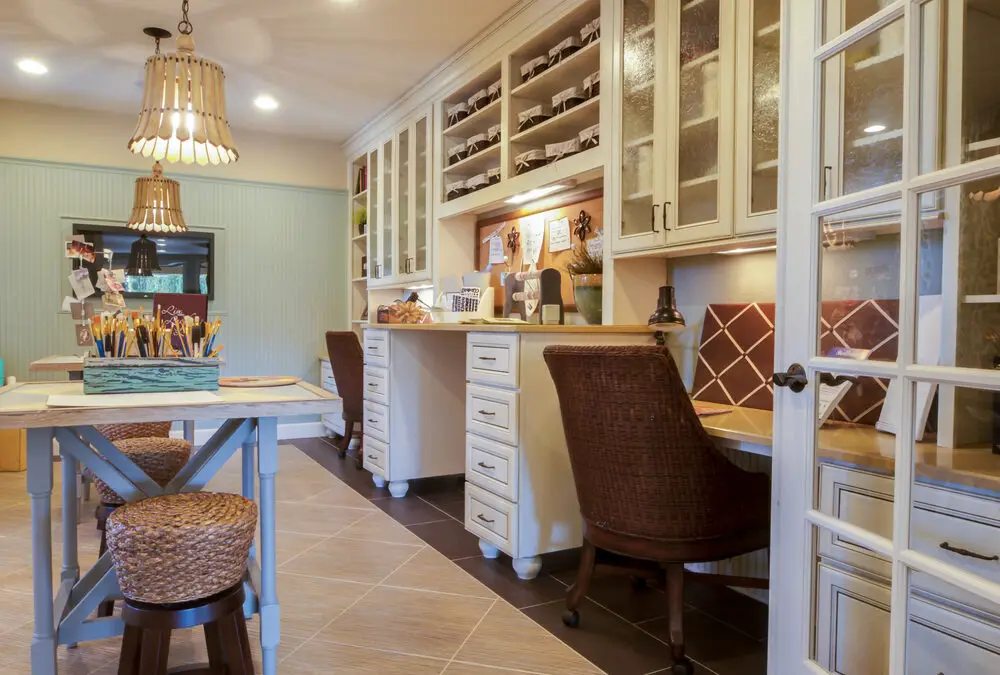
Smart and Crafty Craft Storage Ideas
This post is co-written by my talented, artistic friend and architect, Laura Davis, Vice President and Principal of hpd architecture + interiors. As dedicated crafters, we know how important it is to have a designated space for all my creative supplies. Let's face...
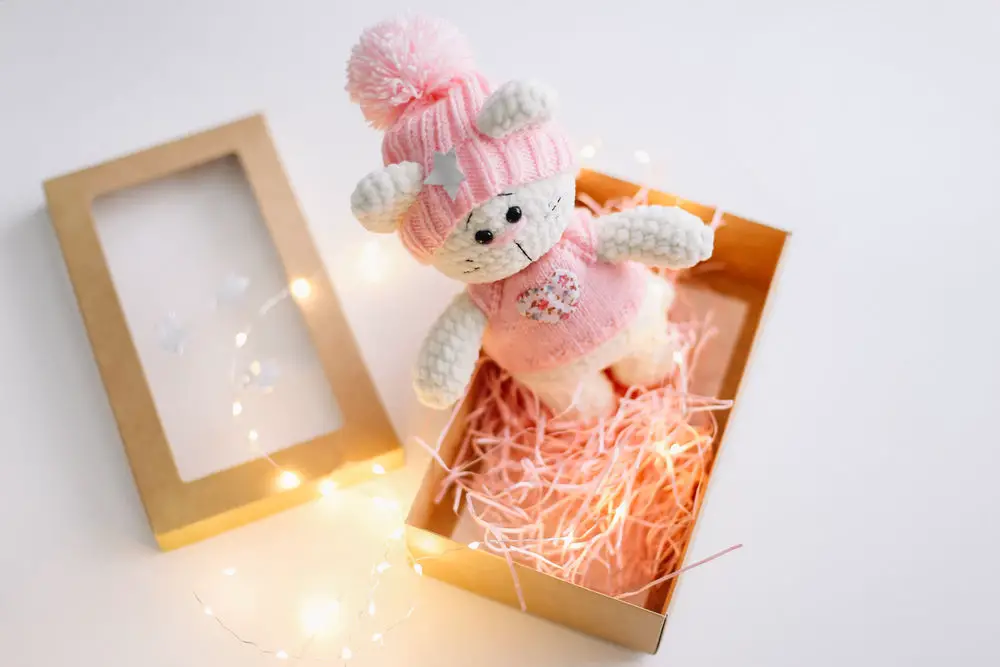
Top Handmade Gift Ideas 2023
I’ve always considered that handcrafted gifts carry more meaning than store bought ones, especially when they are customized to the recipient’s taste. In this era of fast fashion and cheap imports, handmade gifts allow me the opportunity to personalize the gift with...

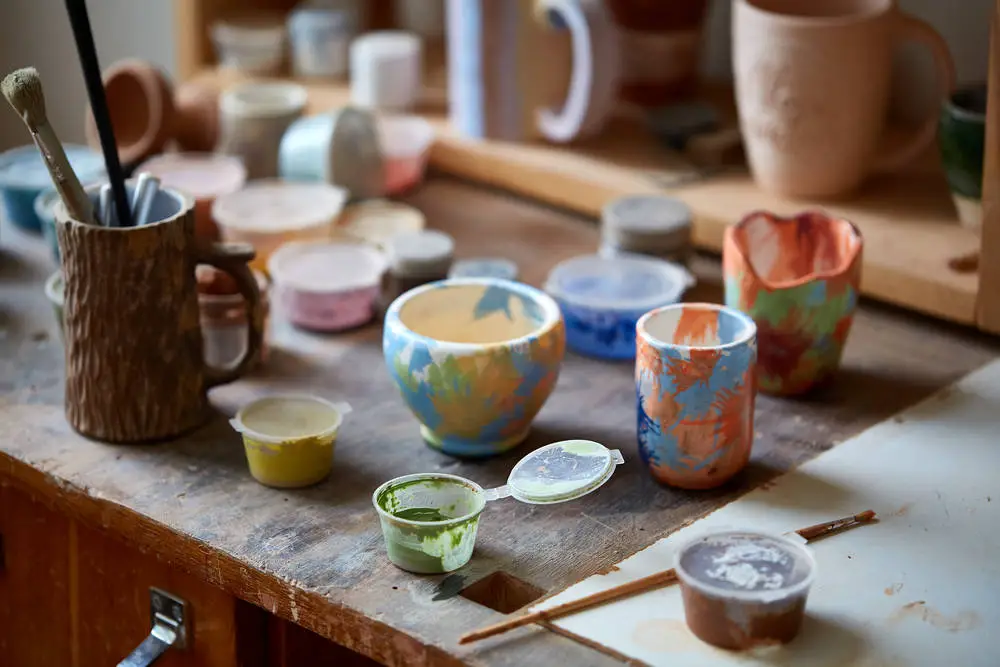







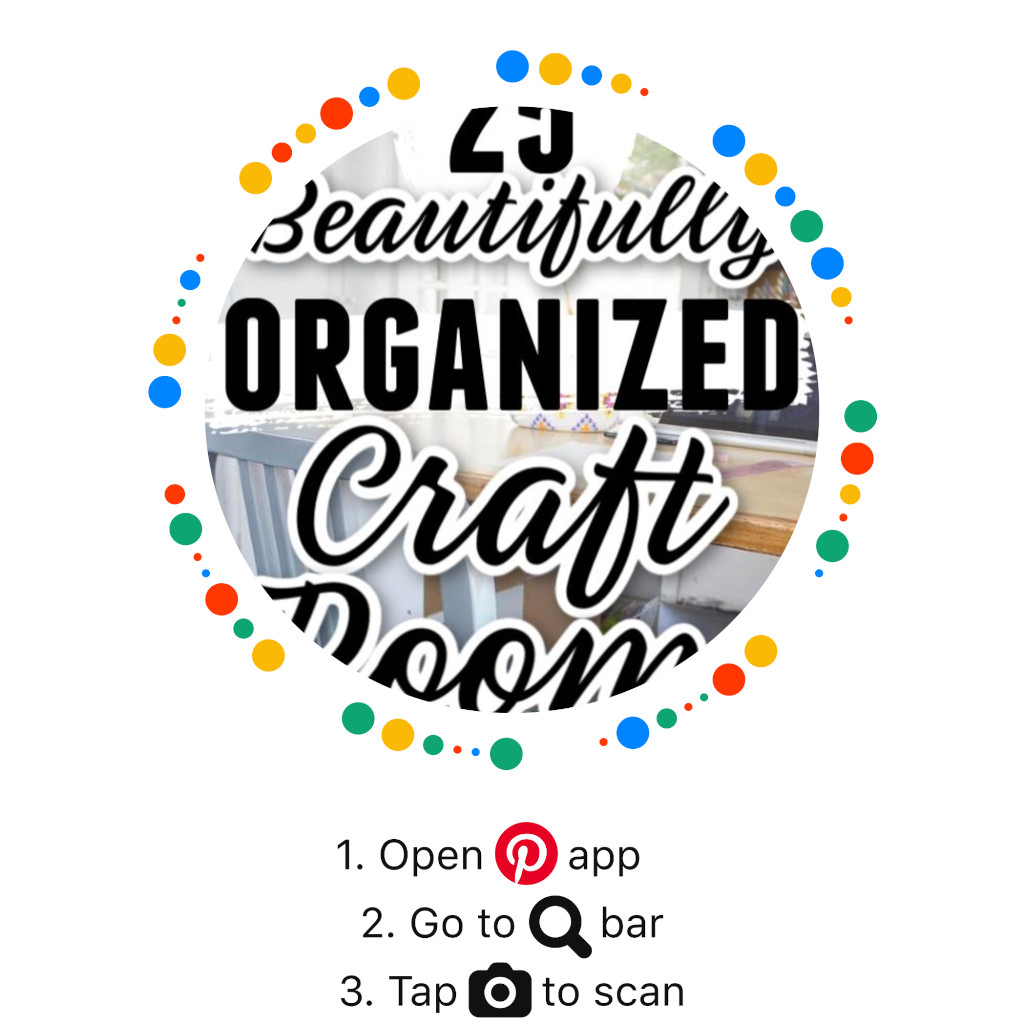
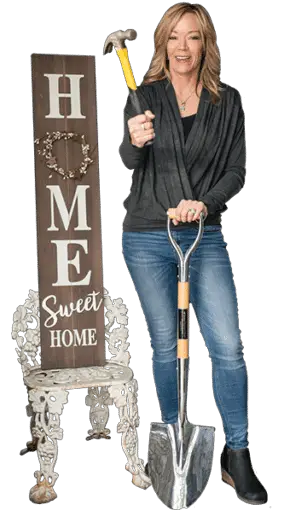 What’s your happy place? Crafting? Cooking? Cocktails? Party planning? Yes please! I love it all, and I’ve tried a lot. Check out my how-to’s! What should we do next?
What’s your happy place? Crafting? Cooking? Cocktails? Party planning? Yes please! I love it all, and I’ve tried a lot. Check out my how-to’s! What should we do next?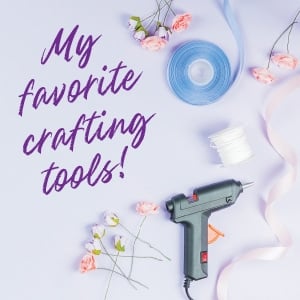


0 Comments